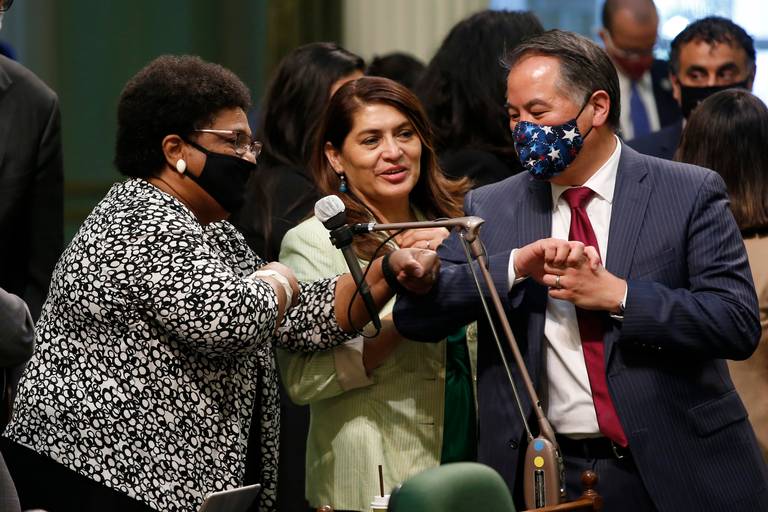 Thomas Espenshade
Thomas EspenshadeSince the publication in 2009 of his influential study (with co-author Alexandria Walton Radford) on admission patterns in the country’s elite private universities (“No Longer Separate, Not Yet Equal”), Princeton researcher Thomas J. Espenshade’s data have been an oft-cited resource for the anti-affirmative action Right. In his study, Espenshade compiled GPA and SAT test scores for selective private institutions of higher education, and compared them to admission rates by race. He reported that Asian American applicants appeared to be admitted at a lower rate than White, Black or Latino peers with comparable quantitative scores. He then extrapolated that into SAT scores, concluding that a hypothetical Asian American student would require a theoretical extra 140 points on the SAT score to achieve the same probability of admission as a White peer, and a theoretical extra 450 SAT points to achieve the same probability of admission as a Black peer.
This finding has found its way into scores of anti-affirmative action articles, amicus briefs, lawsuits, and civil rights complaints. Most recently, it was cited as major evidence of anti-Asian bias during college admissions in the lawsuit filed by Students for Fair Admissions against UNC and Harvard by lobbyist Edward Blum. Espenshade also features prominently in the administrative complaint filed to the Civil Rights Office of the Department of Justice by 60 mostly Chinese American groups last Friday against Harvard University.
Espenshade’s work is meticulous and appears to show some sort of disadvantage for Asian American applicants to certain selective private universities; but too often, it has also been overinterpreted, misinterpreted, and misreported. Espenshade’s work is not a direct reporting of SAT score disparities at the nation’s select universities. Asian American enrollees are not actually required to score 450 more SAT points than Black enrollees: at Harvard, the gap between average Black and Asian SAT scores is a mere 190 points on a 2400 point scale. Espenshade is offering an interpretation of college admissions (from twenty years ago) that he has artificially modeled against an SAT score scale. We can quibble about the modeling, but we should not mistake the model for a direct report of reality: the actual difference in mean SAT scores between White and Asian enrollees at Harvard is similarly negligible. What Espenshade’s study is really telling us is that Harvard weighs SAT and GPA scores far less than if they were the only criteria by which to consider applicants — a point we already know since most universities consider hundreds of factors in making admissions decisions, by a holistic review process where SAT and GPA are only a piece of a much larger puzzle.
Furthermore, Espenshade’s findings may not be applicable to public universities, which are far less selective than private institutions. It is not clear whether or not Espenshade excluded international students in his analysis. Above all, correlation is not causation.
But finally, and most importantly, Espenshade’s data deliberately over-simplifies the college admissions process by excluding most of the criteria upon which admissions officers base admissions decisions. By considering only applicant GPA and SAT score, Espenshade necessarily places total (and determinative) weight on these two quantifiable metrics alone, and assumes that the over 900 other factors that admissions officers consider under holistic review are simply unimportant.
Holistic review is standard in college admissions precisely because institutions of higher education in America have increasingly deprioritized standardized test scores and GPA, in recognition of the numerous studies that demonstrate the poor power of these metrics in assessing applicant merit. Studies show that the SAT I — which was only ever intended to predict first-year college performance — predicts only 22% of variability in student success in that first year. A separate study showed that a 100-point increase in SAT score correlates to only about a 1/10th of a point in first-year college GPA. Colleges and universities that no longer require applicants’ SAT scores find that their students fare just as well as students enrolled in schools where SAT scores are mandatory. In fact, the only applicant metric that the SAT appears to be able to faithfully predict is family income.
Critics of affirmative action argue, however, that Espenshade’s data prove that holistic review is discriminatory against Asian Americans. They argue that race-conscious affirmative action, which is one of the hundreds of background datapoints considered (holistically) for each applicant, is biased against Asian American applicants. They argue that this extrapolated and theoretical 140 point gap between Asian and White applicants is proof that affirmative action is unconstitutional.
Thomas Espenshade, himself, doesn’t buy that interpretation of his own data.
In 2009, Inside Higher Education reached out to Espenshade and asked him to comment on the popular (mis)interpretations of his data. They reported:
Espenshade said in an interview that he does not think his data establish this [anti-Asian] bias. He noted that while his formulas are notably more complete than typical test score comparisons by race and ethnicity, he doesn’t have the “softer variables,” such as teacher and high school counselor recommendations, essays and lists of extracurricular activities. It is possible, he said, that such factors explain some of the apparent SAT and ACT disadvantage facing Asian applicants.
At the same time, he said he understood that these numbers would certainly not reassure Asian applicants or those who believe they are suffering discrimination.
“I understand the worry of Asian students, but do I have a smoking gun? No,” he said.
Asked again last Friday about inclusion of his data in the recent civil rights complaint against Harvard, Espenshade told the Harvard Crimson:
“I stop short of saying that Asian-American students are being discriminated against in the college application process because we don’t have sufficient empirical evidence to support that claim,” Espenshade said.
In short, Thomas Espenshade doesn’t believe his data are proof of anti-Asian discrimination in the college application process.
So maybe the anti-affirmative action Right should stop co-opting his science to advance their own partisan agenda? Just sayin’.

